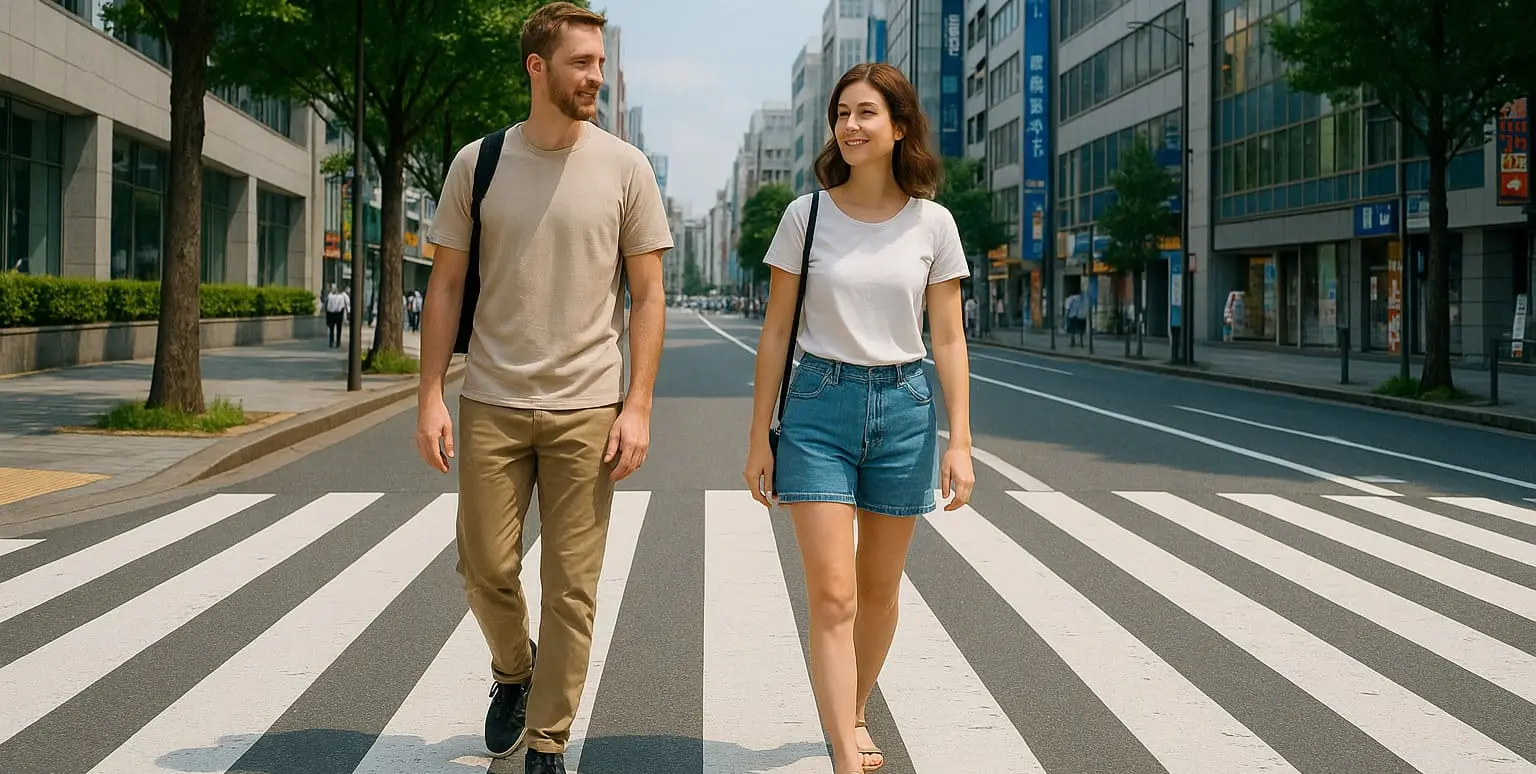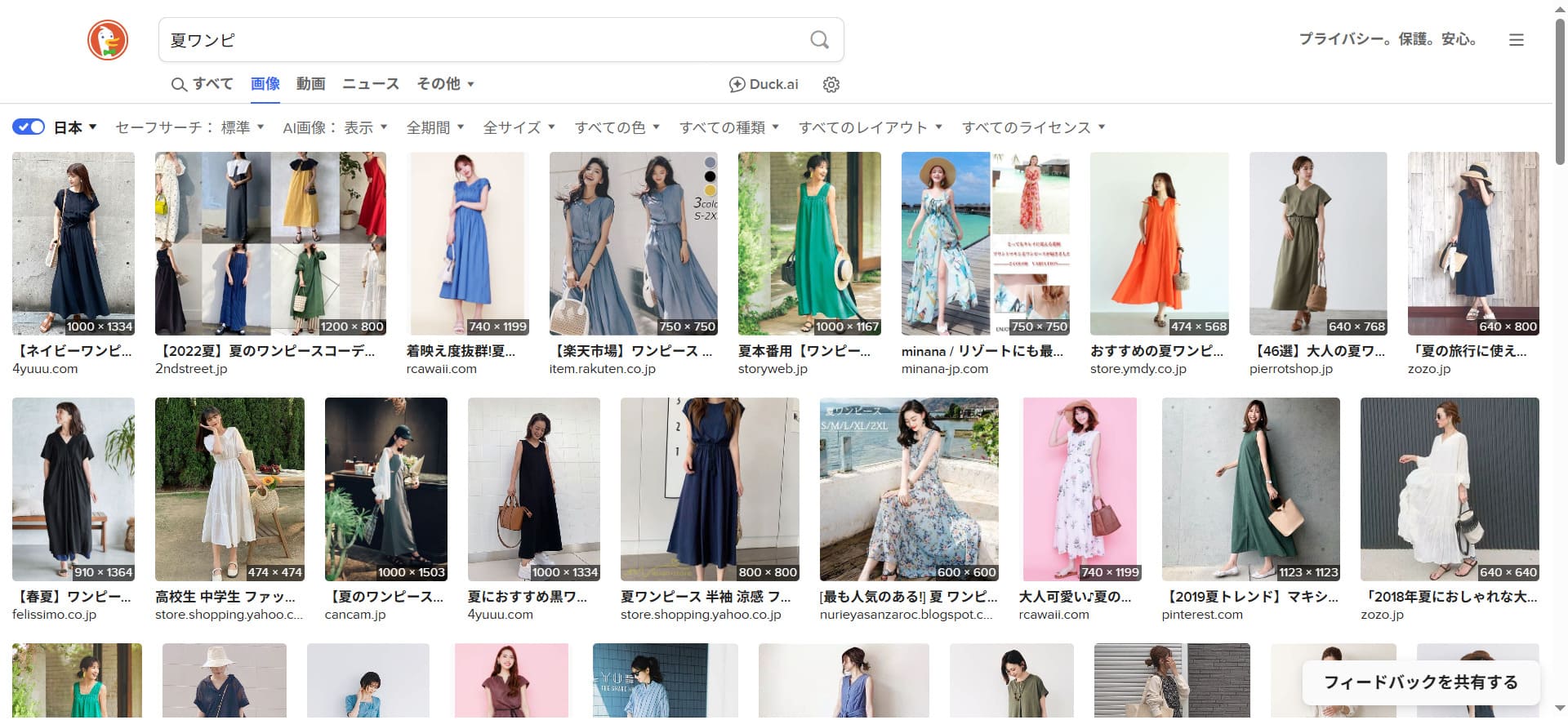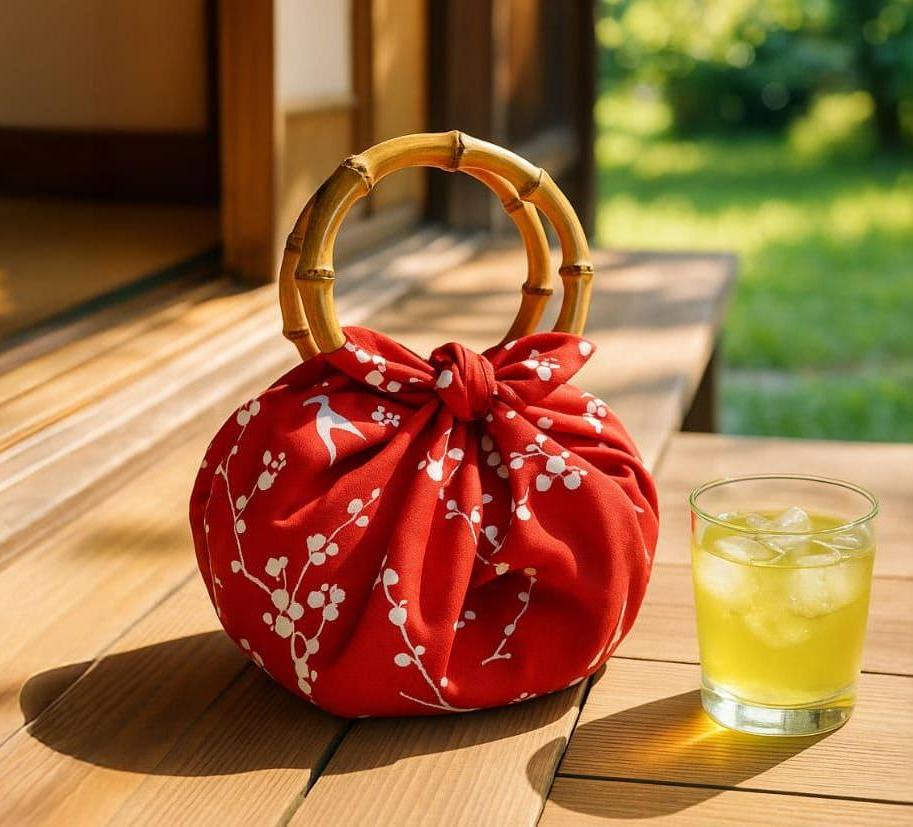“What should I wear in Japan?”
I see this question pop up all the time on forums.
Sometimes, I even get asked directly.
And I’ll admit—my first instinct is to think:
“What do you mean? Japan isn’t a jungle full of half-naked tribes or a distant planet ruled by aliens. Just wear what you normally wear. Dress for the weather. Problem solved.”
But that reaction is, frankly, a bit arrogant.
Because even I—someone who lives here—quietly wonder how others might see me.
I still try not to look out of place.
And if someone told me to “blend in” on my first trip to a foreign country, I’d probably say, “Easy for you to say.”
Here’s the truth:
Most Japanese people really don’t care what you wear.
A tourist in a loud floral shirt or shorts at a restaurant won’t raise eyebrows.
At most, we’ll think, “Ah, a traveler.” That’s it.
But still—
That tiny voice in your head, wondering if you’re sticking out or being judged—
it can slowly eat away at your comfort.
And when you’re not comfortable, it’s harder to enjoy your trip.
So in this article, I’ll walk you through how to dress in Japan without standing out—specifically for summer.
This isn’t about chasing trends or looking “cool.”
It’s about looking clean, appropriate, and quietly confident—just like many locals do.
If you’ve found this page while wondering what to pack or what to wear, you’re already halfway there.
There’s no need to overthink it.
Just a few small adjustments can help you blend in effortlessly.
And honestly? A traveler who blends in just a little—always looks kind of cool.
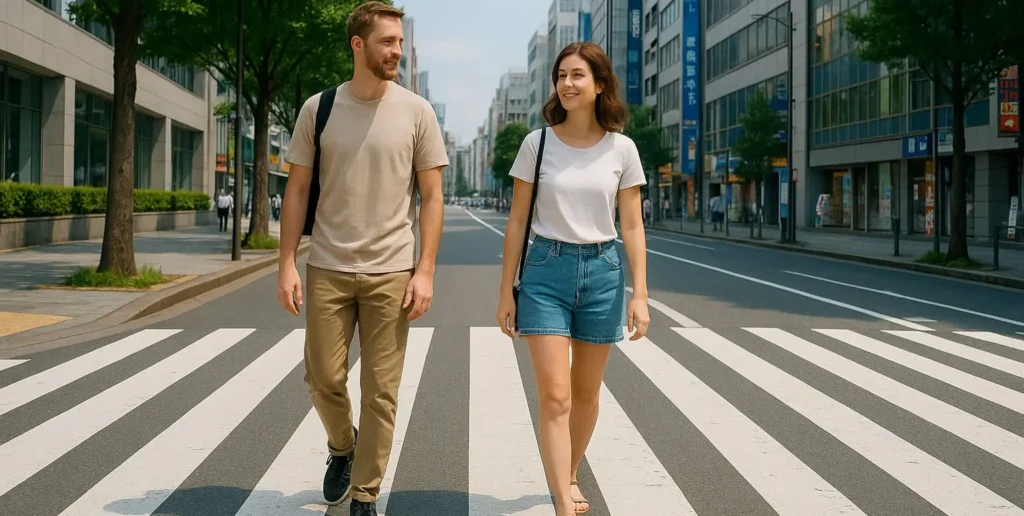
1.What “Normal” Looks Like in Japan Today
First, let me be clear: I’m not a fashion critic, nor an influencer with 500,000 followers.
I’m just an ordinary Japanese guy who runs a souvenir shop—someone who’s not badly dressed, but definitely not overly fashionable either.
Still, I believe I’m more than qualified to write this article.
In fact, I might be the ideal person for it.
As I mentioned earlier, I’m not here to showcase the latest trends.
I want to show you what truly blends in on the streets of Japan: the “normal.”
And for that, expert knowledge can introduce the wrong kind of bias, and influencer ego might just get in the way.
If I had to sum up the current fashion climate in Japan, I’d say:
Minimalism is mainstream.
This is a global trend, sure—but it’s especially noticeable in Japanese cities.
The influence of Korean pop culture, including the massive K-POP wave of recent years, still lingers strongly among younger generations.
But overall, it feels like the peak has passed.
As “sporty” and “outdoor” aesthetics begin to lose their shine, we’re starting to see a quiet return to “clean and polished” styles.
As for silhouettes, the oversized or “big” fit has been trending for several years and continues to dominate.
Tight-fitting, body-hugging clothes are still seen by many as outdated—especially in urban areas.
To sum up: minimal, clean, and oversized.
When I observe how many tourists dress, here’s the impression I get:
Minimal? A bit too loud in color or pattern.
Clean? Often leans sporty or outdoor.
Oversized? Many wear clothes that fit their body too perfectly—what we call “just right,” but it tends to stand out here.
Add a large backpack or flashy sunglasses, and you’ve got a textbook “tourist” look.
With that context in mind, the next two chapters will explore how women and men can each achieve that “perfectly ordinary” summer look in Japan.
2. For Women: Blending In with Comfort and Style
To stay comfortable—and blend in naturally—during summer in Japan, your outfit needs to do two things:
- Handle the heat, and
- Feel appropriate in a range of public places, from shrines to cafés to department stores.
With those in mind, here are two common outfit types you’ll see Japanese women wear all the time.
Pattern 1: Slightly Dressy, But Not Trying Too Hard
A simple one-piece dress—solid color or with a subtle pattern—paired with low heels or flat sandals.
This type of outfit is versatile: great for sightseeing, dining out, and even slightly nicer restaurants where you might want to look a bit more polished.
Many Japanese women aim for a look that’s tidy but effortless.
In other words, it shouldn’t feel like you’re “dressed up,” but it also shouldn’t look thrown together.
And here’s the key point:
Take a look at the comparison images below.
📸 A Visual Hint: What “Summer Dress” Means in Japan
If you search for “a summer dress” in English, you’ll mostly find bright colors, bold floral prints, short lengths, and revealing cuts—outfits that feel more suited for the beach or a tropical resort.
But if you search in Japanese for “夏ワンピ” (natsu wanpi, or “summer one-piece”), the results are totally different: calm tones like black, navy, or beige, simple designs, and modest long silhouettes.
Skin coverage tends to be more conservative, and the style clearly leans toward everyday city wear.
Surprised at the contrast?
That moment of realization means you’re already halfway to choosing something that blends in.
So what kind of dress actually works in Japan?
Stick to these simple guidelines:
- Color: Black, white, beige, or earthy tones—nothing too flashy
- Pattern: Best to go plain, or keep patterns small and subtle
- Fit: Slightly loose silhouettes, like long A-line cuts or relaxed shapes
Pattern 2: Comfortable Yet Polished: Go with a Relaxed Pants Style
Another go-to option is a relaxed pants style in neutral tones.
In Japan, casual doesn’t necessarily mean sloppy—but wearing something too sporty (like what you’d wear after a gym session) can stand out in a not-so-good way.
That’s why pairing natural-fiber pants like cotton chinos or linen with a more refined top can help you blend into just about any neighborhood.
For example:
- White shirt + olive chinos + leather-style sandals
- Polished short-sleeve blouse + beige wide-leg pants + chain bag
- Sleeveless top + navy drawstring pants + black sneakers (a comfy look that won’t feel out of place at cafés or parks)
Each of these combinations is clean, comfortable, and appropriate for sightseeing, shopping, or dining out.
The key here is that each outfit pairs a slightly loose-fitting top with wide-leg pants.
Tight, body-hugging clothes? Most Japanese women tucked those away in the back of their closets ages ago.
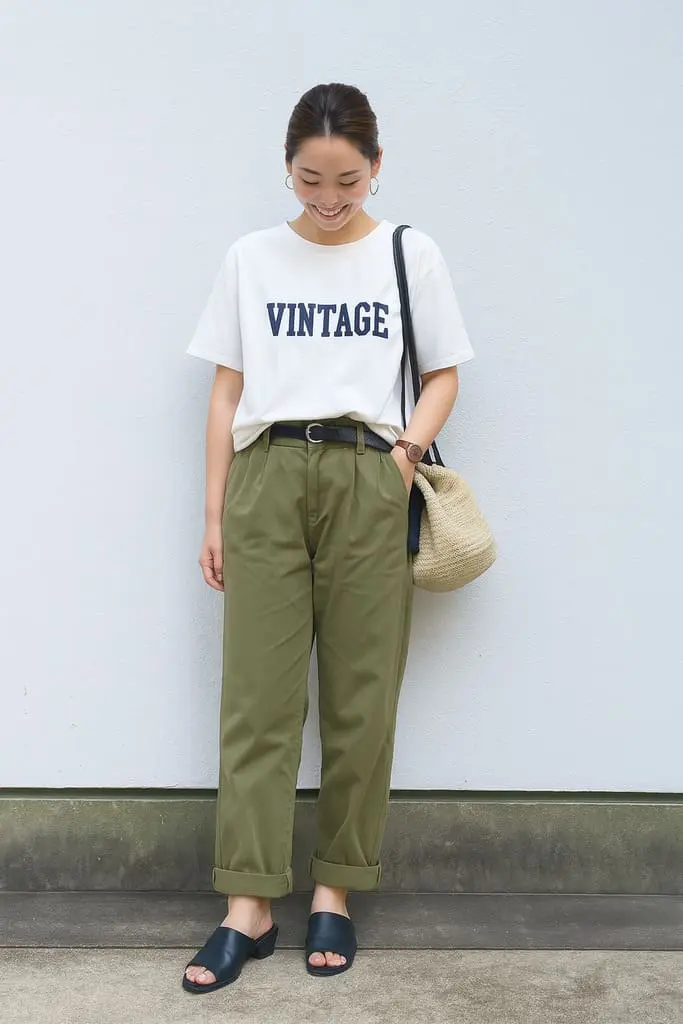
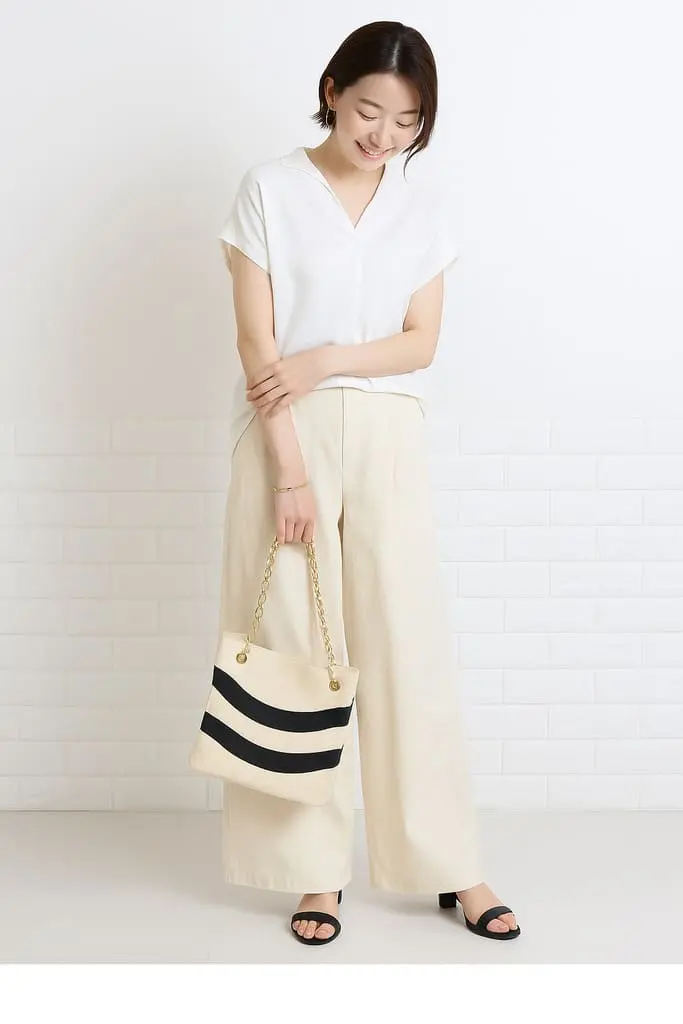
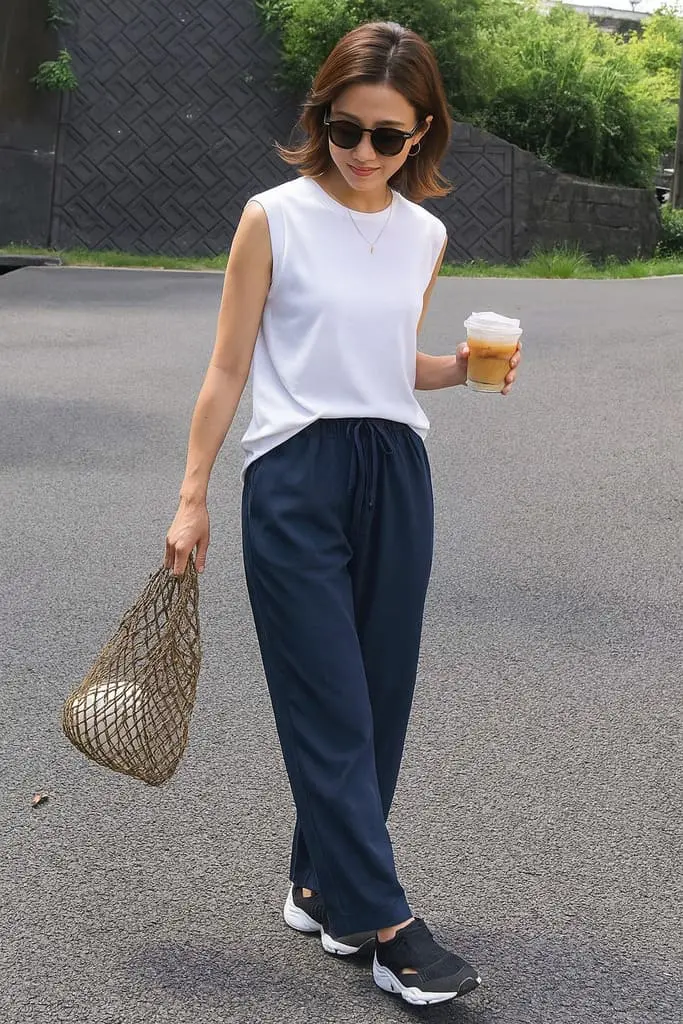
Also, in Japanese cities, it’s very common to tuck in your top.
We know—this might be a divisive topic. But trends don’t always follow personal preference, and sometimes it’s worth stepping a little outside your comfort zone.
That said, if you really don’t like tucking in, consider switching to a skirt style in the same earthy tones.
Even then, the slightly oversized silhouette remains the norm.
Pairing a relaxed T-shirt with a natural-fiber skirt can give off a breezy, resort-like vibe—perfect for Japan’s hot summers.
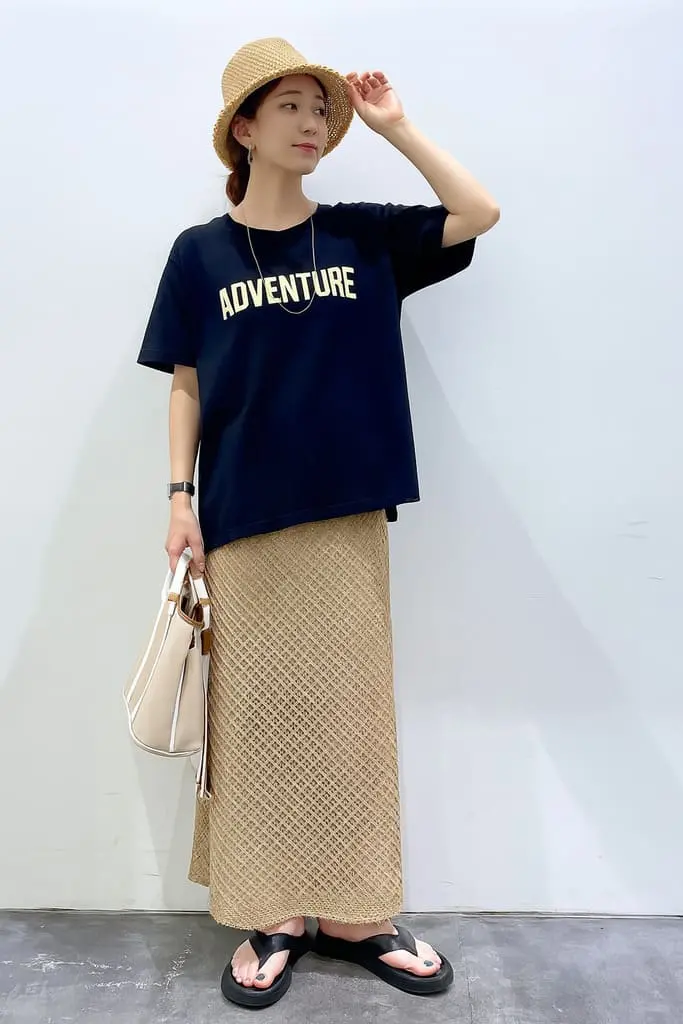
3. For Men: Blending In with Comfort and Style
Let’s start with the images below.
The first one shows a stereotypical “touristy” male traveler.
The second shows a style more in line with what you’d see in Japan.
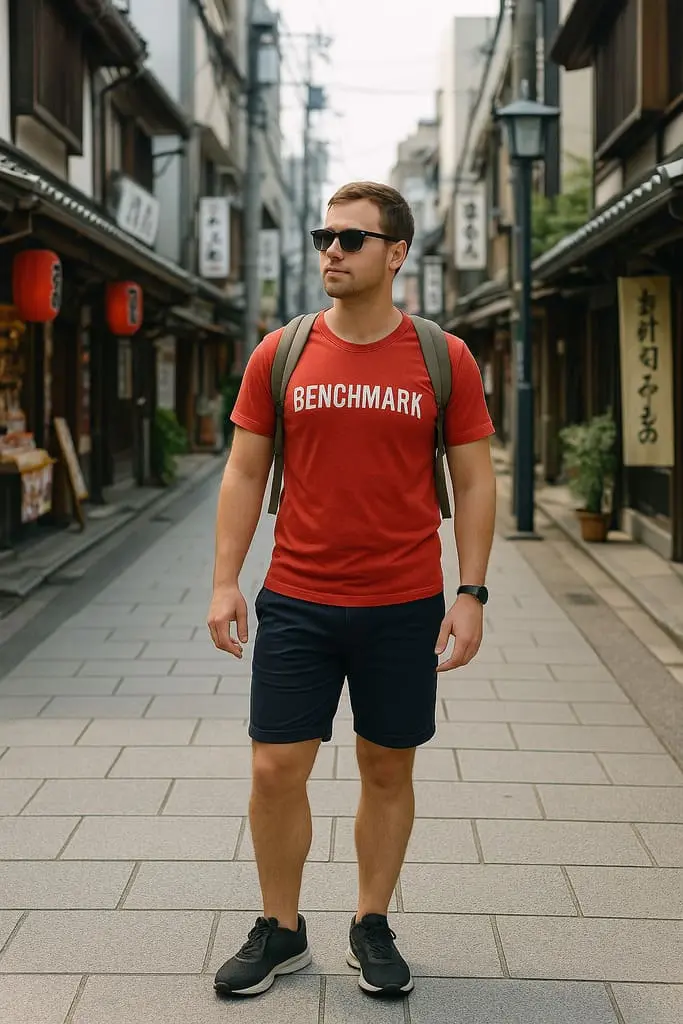
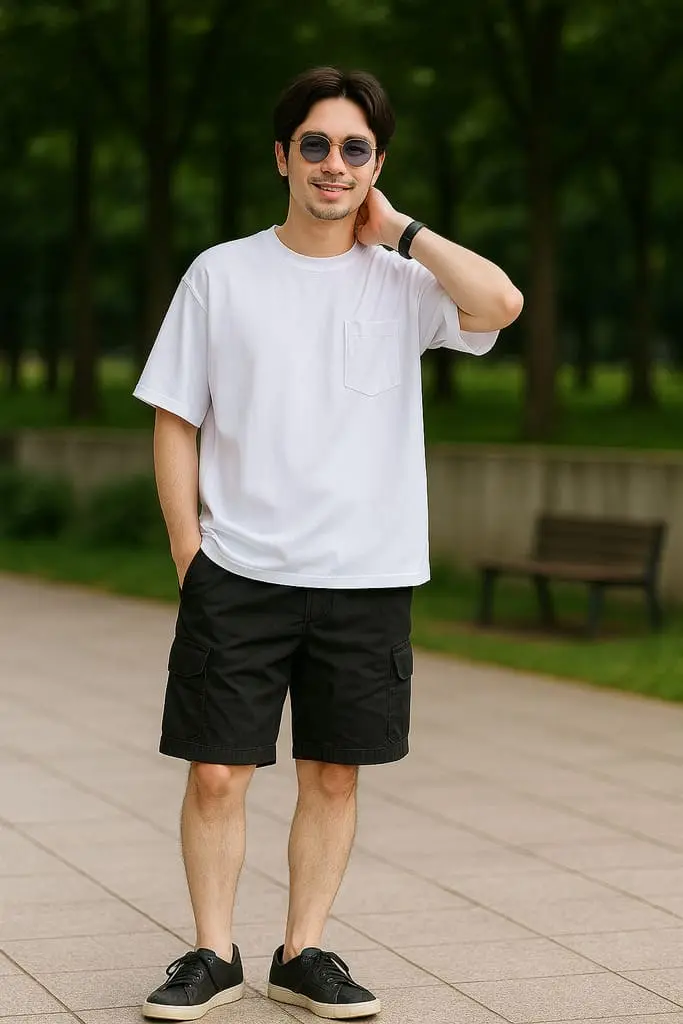
Even though both outfits use similar items, the overall impression is quite different.
This isn’t about which one looks better or which one you prefer.
It’s just about which one blends in better in Japan.
Here’s how to dress for Japan’s hot and humid summers—without standing out too much.
The 2×2 Formula
When it comes to summer fashion for men, the options are… limited.
Basically, it’s a simple mix-and-match of:
Tops (T-shirt or shirt) × Bottoms (shorts or long pants).
That’s it.
Now, wearing long pants in Japan’s sticky summer heat takes real commitment.
In most cases, you’re better off going with shorts.
(Some Japanese people aren’t huge fans of men’s shorts, but at the same time, others can’t understand why anyone would insist on long pants in this kind of weather. Since you can’t please everyone—just pick what’s more comfortable.)
If you do go with shorts, pairing them with a shirt makes the overall balance a bit tricky.
Unless you have a particular style in mind, a plain T-shirt in black or white is a safe choice—especially in a relaxed, slightly oversized fit. (Yes, that oversized rule applies to men too.)
On the other hand, if you’re heading somewhere a bit upscale—like a nice restaurant—go with a shirt and long pants. No hesitation needed there.
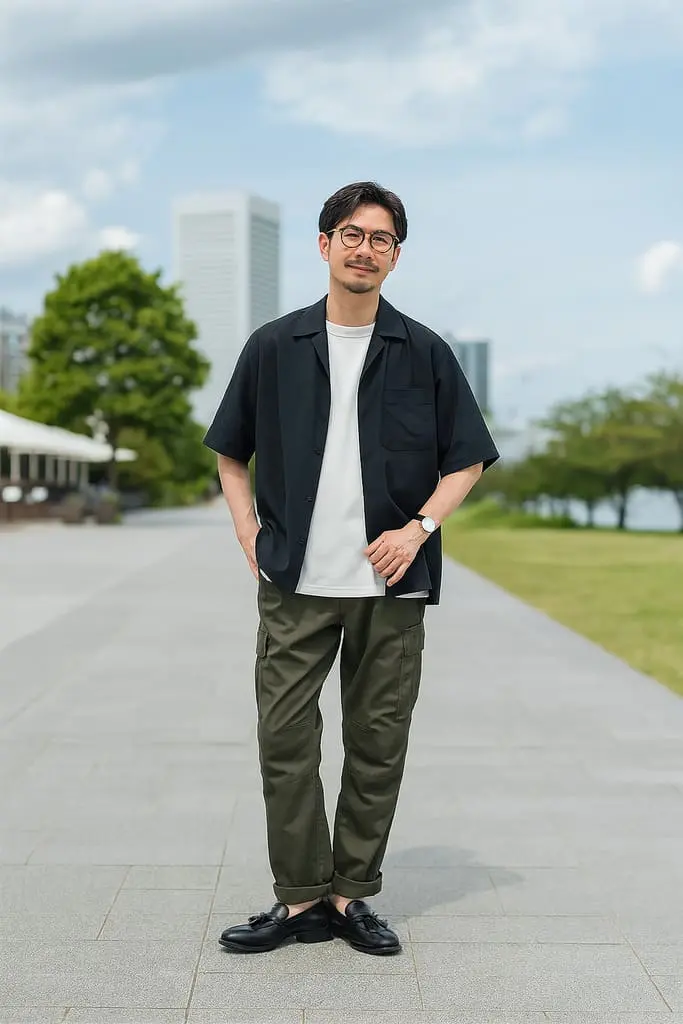
A Note on Accessories (Especially Sunglasses)
Here’s one more important detail: accessories.
And by that, we mostly mean sunglasses.
In the West, pitch-black shades might be totally normal.
But in Japan, that Men-in-Black look can feel a bit too intense—and sometimes even outdated.
A safer bet?
Go for lighter-colored lenses—like brown or gray.
They’re more in tune with the vibe here.
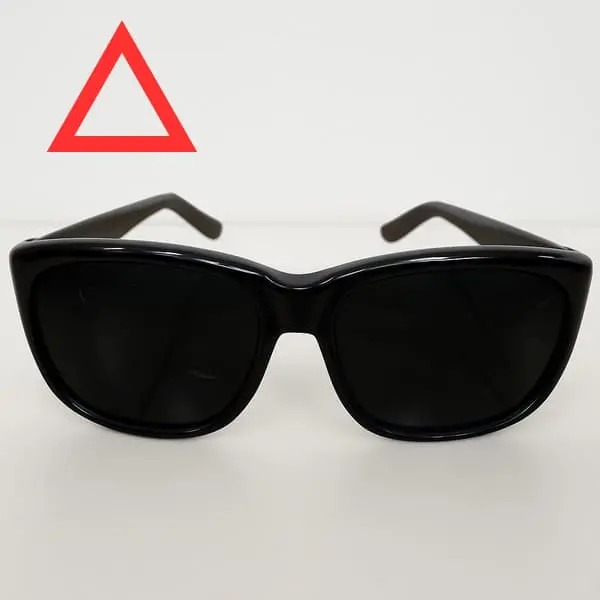
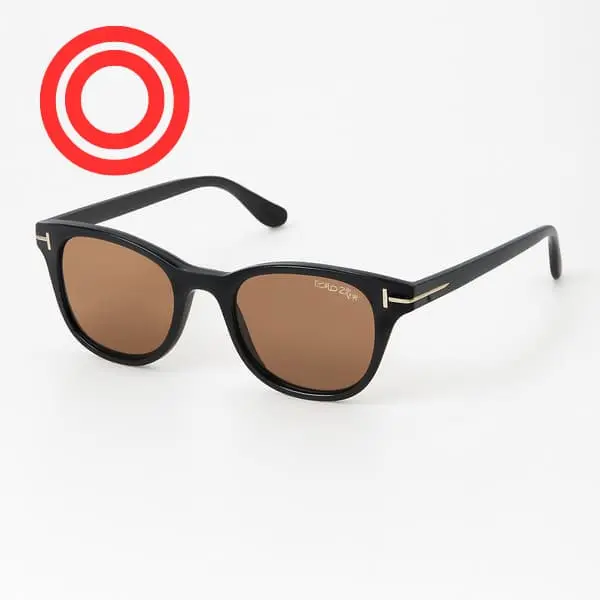
4. Where to Shop
Of course, you can plan your outfits back home before your trip.
But honestly? One of the best moves you can make is to buy your clothes after you arrive in Japan.
You’ll find clothes that are perfectly tuned for the local climate, fit, and style—and shopping for them becomes part of the cultural experience itself.
Here are a few places we strongly recommend. (All are great for both men and women.)
■ UNIQLO (and GU): The Can’t-Go-Wrong Classics
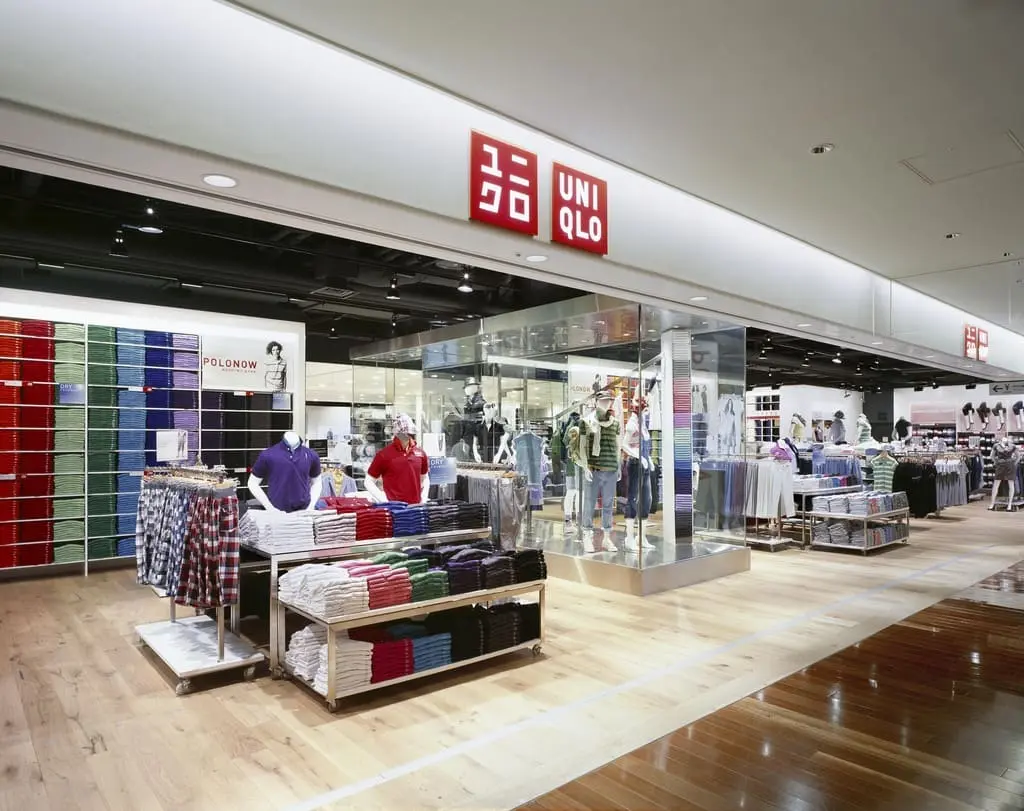
Let’s start with the obvious choice: UNIQLO.
You might already know the brand—but UNIQLO hits differently when worn in Japan.
- Colors and sizing are calibrated to what people actually wear here
- You’ll find everything from basic T-shirts to polished dress shirts
- Summer-friendly fabrics (like Airism) and UV-blocking items are everywhere
- And they’re literally everywhere—within a 10-minute walk in most cities
GU (pronounced “gee-you”) is UNIQLO’s younger sibling.
It’s slightly cheaper and more youth-focused, but if you stick to plain T-shirts and neutral pants, you’ll be just fine.
■ MUJI: Clean, Natural, and Quietly Stylish
Another solid choice is MUJI.
While it’s known globally for its minimalist design, MUJI in Japan has a surprisingly wide range of clothing, all designed to blend into everyday life—both literally and aesthetically.
- Soft, breathable materials like linen and cotton
- Calm color tones: white, beige, khaki
- Relaxed, slightly oversized silhouettes
- Gender-neutral styling that works for everyone
If UNIQLO feels too “functional,” MUJI gives you something softer and more organic.
A piece from MUJI can work as a travel outfit or double as your cozy hotel loungewear.
■ Where Not to Shop (Unless You’re Feeling Bold)
Some stores are better avoided—at least if your goal is to blend in.
Take Don Quijote, for example.
This chaotic discount megastore does sell clothes… but they tend to be cheap in both price and appearance. Think pajama material, novelty prints, or Halloween-level cosplay energy.
Then there’s the “Shibuya 109” crowd—brands like WEGO and other street-style fast fashion labels.
Unless you’re a teenager (or pretending to be one), it’s easy to come off as trying a bit too hard.
If you’d rather not be that tourist in loud neon pants… skip it.
5. Final Thoughts
Let’s be honest—summer in Japan can be tough.
It’s hot, it’s humid, and just walking around can leave you drenched in sweat.
So don’t feel pressured.
Wear whatever feels right to you—there’s no need to suffer or dress to please others.
No one has the right to criticize you for that.
But if you do feel like blending in a bit—
if you’re curious about what it’s like to walk the streets in a more “local” style—
this guide is here for you.
Blending in isn’t about hiding who you are.
It can actually enhance your travel experience—
letting you connect more deeply with the place you’re exploring.

